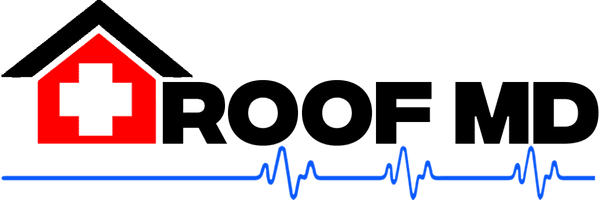Understanding Chimney Leaks: A Guide for Homeowners
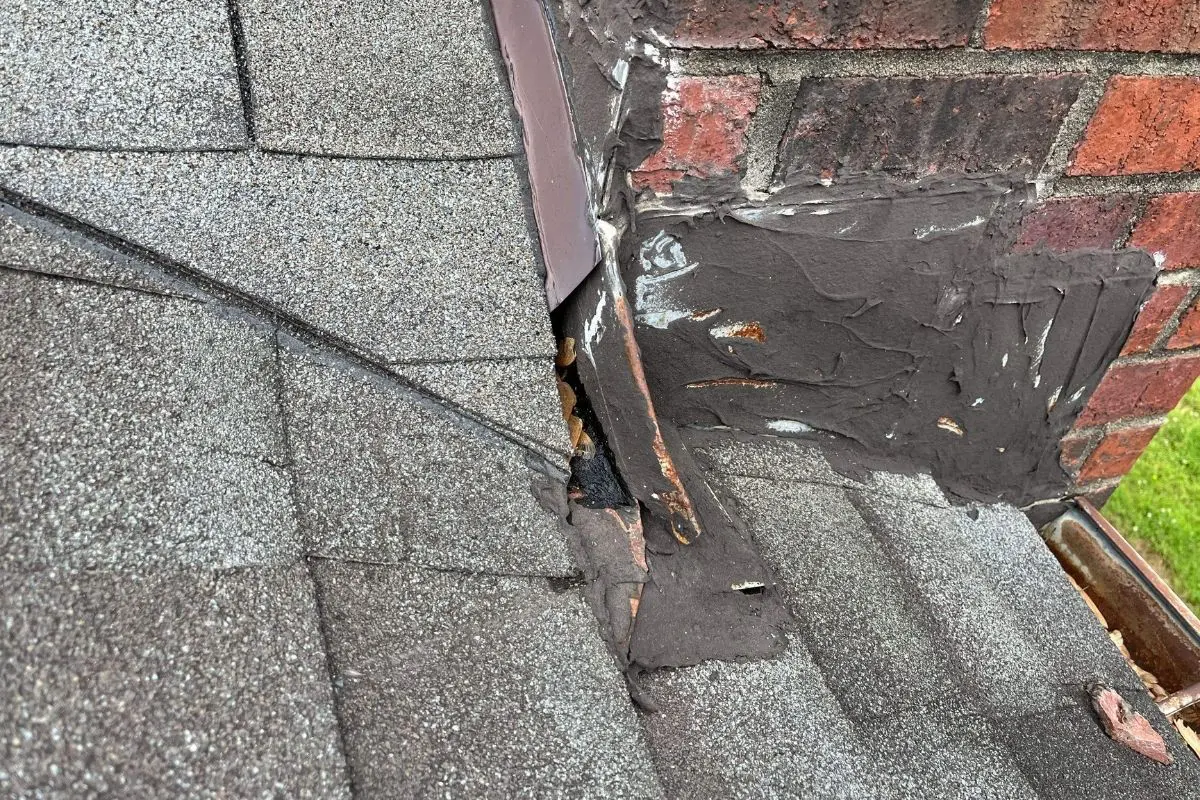
The chimney is a prominent architectural feature of many homes, yet its intersection with the roof system is one of the most technically complex and common points of water intrusion. A leak that begins at the chimney can lead to significant and costly structural damage if not diagnosed and repaired correctly.
This guide from the experts at Roof MD will detail the structural relationship between your chimney and roof, explain the primary causes of leaks, and provide an in-depth look at the signs of water intrusion.
The Critical Chimney-Roof Intersection
A chimney penetration requires a large opening in the roof’s structure. To prevent water from entering this vulnerable area, a sophisticated, multi-part system called flashing is installed. Flashing consists of precisely formed metal pieces that integrate the vertical chimney structure with the angled plane of the roof, directing water safely down and away from the opening. The integrity of this system is paramount to a watertight roof.
Primary Causes of Chimney Leaks and Water Intrusion
While various factors can contribute to a leak, our extensive field experience shows that failures typically originate from one of three critical faults:
- Improperly Installed or Degraded Flashings: Flashing is not a single component but a system of interwoven parts (apron, step, and counter-flashing). If any part is installed out of sequence, improperly sealed, or has corroded over time, it creates a direct path for water entry. This is the most frequent cause of chimney-related leaks.
- Absence of a Chimney Cricket: Building codes mandate that any chimney with a horizontal width of 30 inches or more (≥30″) must have a cricket. A cricket is a peaked diverter structure built on the roof behind the chimney. Its function is to prevent water and debris from accumulating at the chimney’s wide base, which creates hydrostatic pressure and can overwhelm the flashing system. The absence of a required cricket is a significant design flaw that inevitably leads to leaks.
- Compromised Chimney Structure: In some cases, the roofing and flashing systems may be perfectly intact, but the chimney structure itself is failing. Materials like brick, stone, and mortar are porous. Over time, they can absorb significant amounts of water, leading to leaks that manifest inside the home. This issue is independent of the roof itself, and simply re-flashing will not resolve the water intrusion.
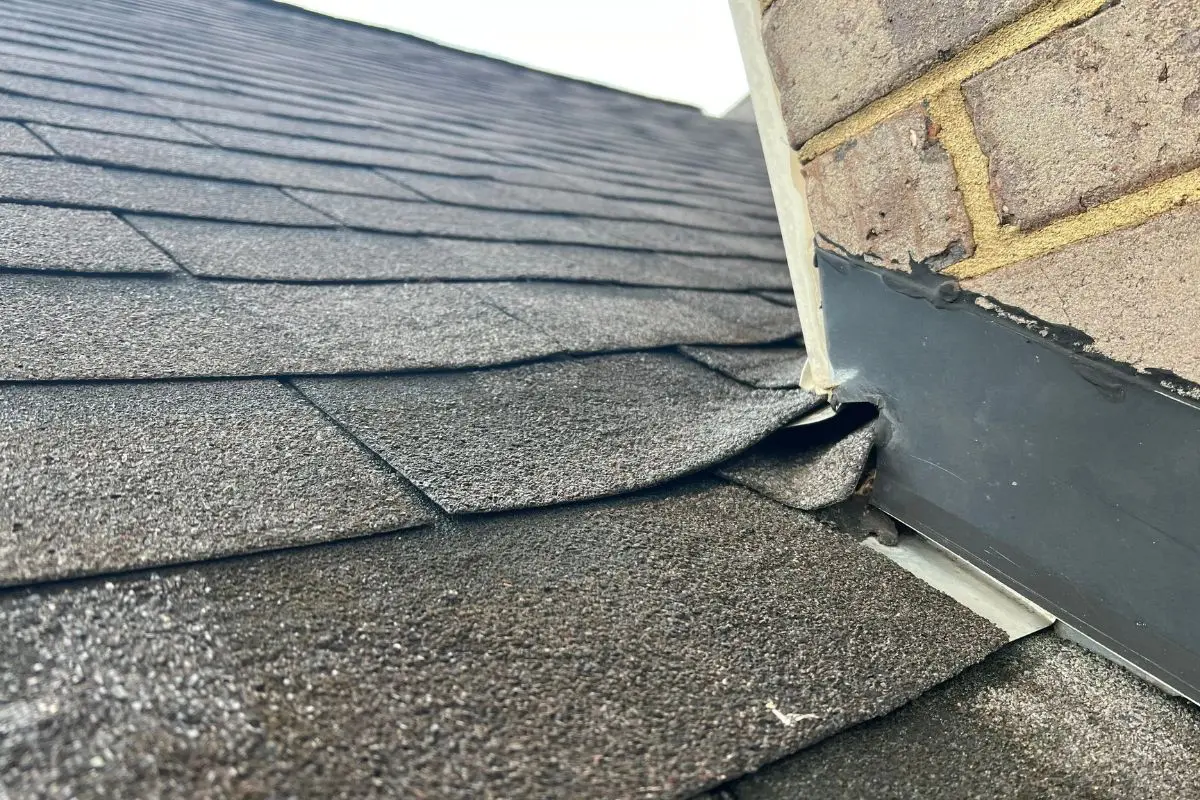
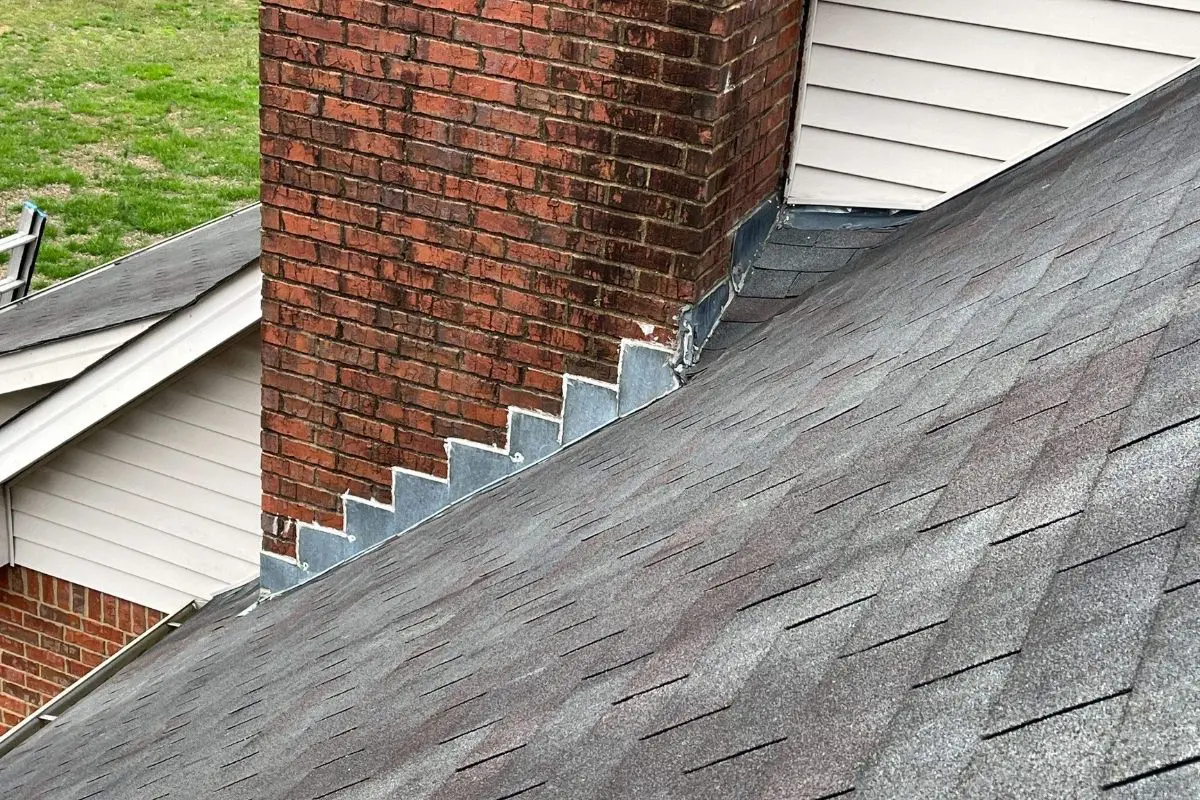
Identifying the Signs of a Chimney Leak: An In-Depth Look
Identifying a chimney leak early is key to preventing widespread damage. Homeowners should be vigilant for the following indicators:
- Water Stains on Ceilings and Walls: This is the most common sign. Stains may appear brownish or yellowed on the ceiling or walls surrounding the chimney breast. It is important to note that water can travel along rafters and framing before it becomes visible, so the interior stain may be located several feet from the actual point of entry on the roof.
- Dampness and Musty Odors: A persistent musty smell emanating from the fireplace or surrounding walls indicates the presence of moisture that is not properly drying out. This environment promotes the growth of mold and mildew within the wall cavities and attic insulation, posing a potential health hazard.
- Spalling or Efflorescence on Masonry: Look for signs of damage on the chimney itself. Spalling occurs when water absorbed by the brick or stone freezes and expands, causing the surface to flake, peel, or pop off. Efflorescence is a white, powdery residue left on the exterior of the chimney as water evaporates, which clearly indicates that water is passing through the masonry.
- Deteriorated Mortar Joints: The mortar between bricks is softer than the brick itself and is often the first part of the chimney structure to fail. Visibly cracked, eroded, or missing mortar creates open channels for water to penetrate deep into the chimney structure.
- Visible Water or Dripping in the Firebox: The presence of water pooling on the floor of your firebox is an unambiguous sign of a significant leak. This may indicate a severe flashing failure, a cracked chimney crown (the concrete slab on top of the chimney), or an issue with the flue lining.
- Rusted Damper or Firebox Assembly: The metal components inside your fireplace, such as the damper or firebox door, should not be exposed to persistent moisture. Rust on these components indicates long-term water exposure and a chronic leak that requires immediate attention.
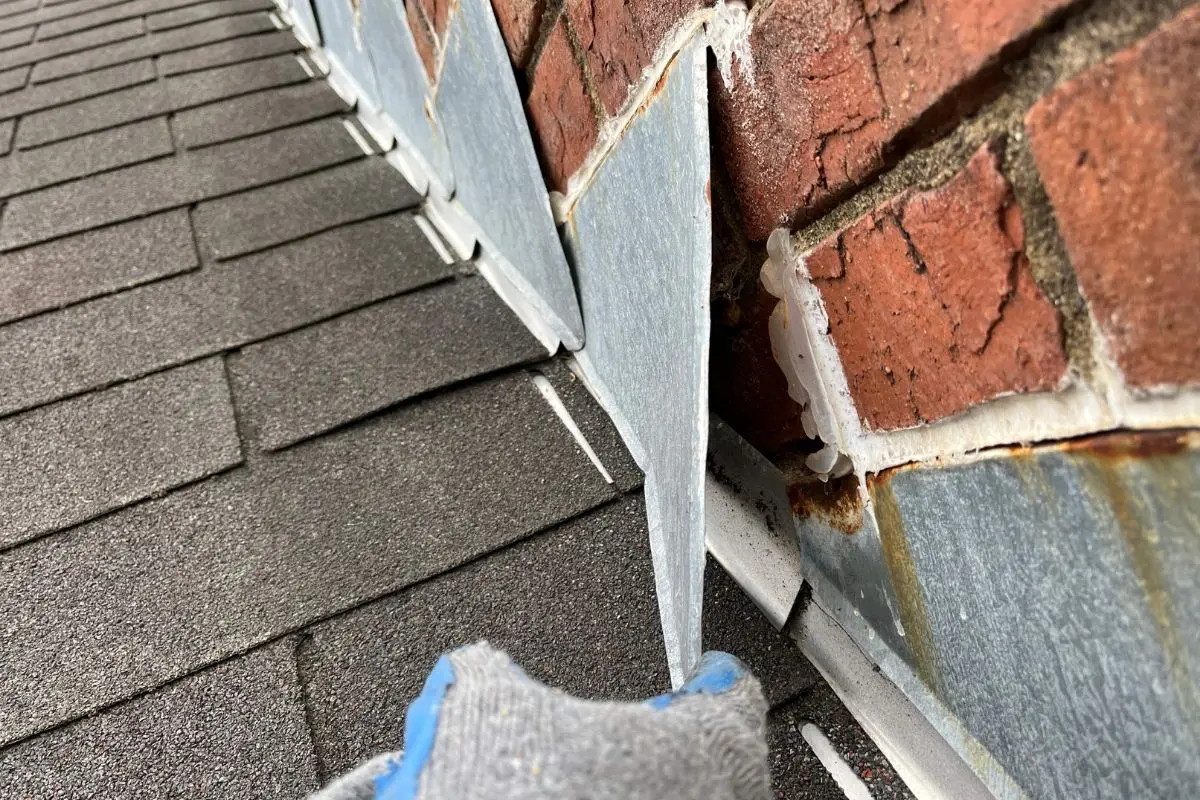
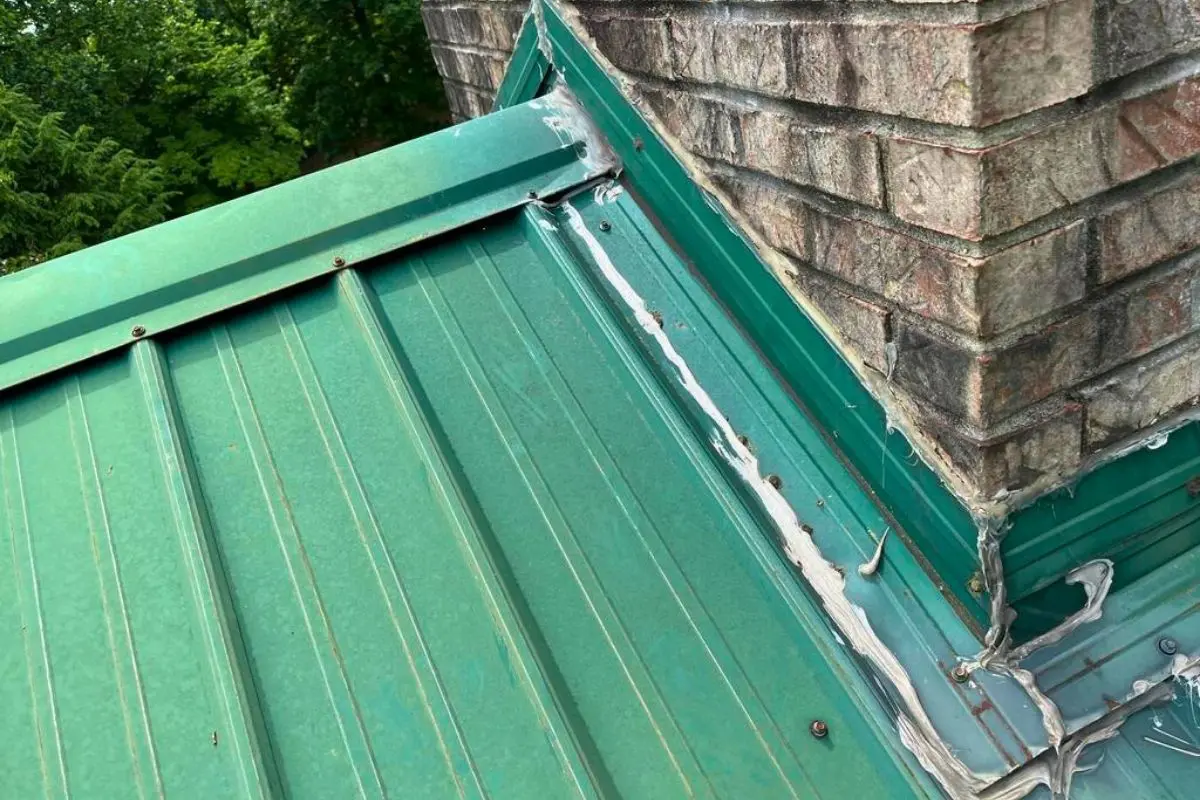
The Roof MD Protocol for a Permanent Solution
At Roof MD, we approach chimney leaks with a comprehensive, systematic repair protocol designed for permanent results. A superficial patch is not a solution.
Many roofing companies may attempt to cut costs by applying sealant or reusing old flashing components. This is improper and will fail. Our process is non-negotiable: we always replace the entire flashing system.
Furthermore, our standard procedure exceeds typical industry practice. Before installing the new metal flashings, we apply a self-adhering ice and water shield. This serves as a secondary, independent waterproofing membrane. We install it on the roof deck around the chimney and, most critically, extend it a minimum of four inches up the vertical chimney walls. This creates a continuous, sealed basin that sits behind the new flashings, providing a redundant layer of protection and guaranteeing a waterproof final product.
If you have observed any of the signs detailed above, we urge you to take action. Contact Roof MD for a professional evaluation. Our team can accurately diagnose the source of your chimney leak and provide a lasting, technically superior repair to protect your Nashville home.
